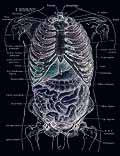
Related Papers
by Dr. Snady
EUS: An effective New Tool for GI Tumors
Role of EUS in Outcome of GI Diseases
Artifacts and Techniques of EUS
Other Organs
EUS has been used to investigate other organs of the body.Lungs
EUS has proven most useful in determining whether lymph nodes seen in the
chest related to lung tumors are malignant or benign. This is determined mainly by
performing fine needle aspiration (FNA) of these lymph nodes with EUS guidance.
Two other methods of obtaining biopsies of these lymph nodes are mediastinoscopy and thoracoscopy.
However, these two methods are procedures that must be done in the operating room and
involve more risk.
EUS with FNA of lymph nodes in the mediastinum has also been used to diagnose sarcoidosis and other benign conditions.
Anal Sphincter
Specialized probes have been used to do EUS for investigating anal
sphincter function. They have been particularly useful in demonstrating rectal tears, scars
or fissures that could not be diagnosed by other methods.
Aorta
The aorta, the major artery of the body, can be seen quite well with EUS. It can therefore be
used to evaluate whether there are any defects inside the aorta such as tumors (sarcomas, etc.),
calcifications, clots, or even an aneurysm.
Spleen
The spleen can be imaged from the stomach with EUS. It can therefore be used to investigate
whether there are any focal tumors or suspicious areas which may require EUS guided FNA.
Kidneys
Parts of the kidneys can be seen from the stomach and small bowel with EUS. It can therefore
be used to investigate whether there are any focal tumors, cysts or stones. The kidneys are
usually evaluated with other tests that are designed for them such as a renal sonogram, scan or
intravenous pyelogram.
Liver
Parts of the liver can be seen from the stomach and small bowel quite well with EUS. It can
therefore be used to investigate whether there are any focal tumors, cysts or scar tissue
which may require EUS guided FNA. Because EUS can find lesions that are less than 1 to 2 cm,
it can find metastatic tumor that cannot be seen on other more standard imaging tests such as
CT scan or MRI.